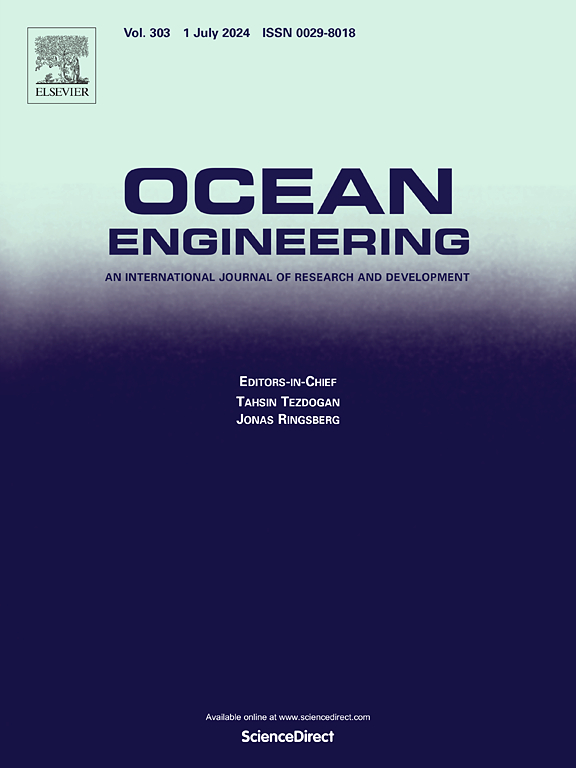大粗糙度环境中的摩擦波消散:底部应力与体冠阻力模型的比较
IF 4.6
2区 工程技术
Q1 ENGINEERING, CIVIL
引用次数: 0
摘要
在岩石海岸或珊瑚海岸等粗糙度较大的近岸环境中,海底引起的摩擦消散是波浪衰减的一个关键因素。有两种经典模型可用于预测海底摩擦耗散:底部应力模型(BS)和体篷阻力模型(BCD)。为了比较这两种模型在受控实验室条件下的性能,本文重新分析了 Dealbera 等人(2024 年)提供的波浪消散数据。本文提出了一种基于实际地形的正面横向面积计算方法。利用多种方法和模型参数化,根据实验数据优化了水力参数和阻力系数。比较了每种模型参数化的性能估计值,发现 BCD 模型的预测性能更强。通过改变估计流速的垂直参考值,BS 模型可以得到改进。本文章由计算机程序翻译,如有差异,请以英文原文为准。
Frictional wave dissipation in macro-roughness environments: A comparison of bottom stress and bulk canopy drag models
Friction dissipation induced by the seabed is a key factor for wave attenuation in nearshore environments presenting large roughness structures, such as rocky or coral shores. Two seminal models are classically used to predict bottom friction dissipation: the bottom stress (BS) and bulk canopy drag (BCD) models. Aiming to compare the performances of both models in controlled laboratory conditions, the present paper reanalyses the wave dissipation data provided by Dealbera et al., (2024). An approach to calculate the frontal transverse area based on real terrain consideration is suggested. The hydraulic parameter and the drag coefficient are optimized from the experimental data using several approaches and model parameterizations. Performance estimators of each model parameterization are compared and reveal a more robust predictive performance of the BCD model. The BS model could be improved by changing the vertical reference of the estimated flow velocity.
求助全文
通过发布文献求助,成功后即可免费获取论文全文。
去求助
来源期刊

Ocean Engineering
工程技术-工程:大洋
CiteScore
7.30
自引率
34.00%
发文量
2379
审稿时长
8.1 months
期刊介绍:
Ocean Engineering provides a medium for the publication of original research and development work in the field of ocean engineering. Ocean Engineering seeks papers in the following topics.
 求助内容:
求助内容: 应助结果提醒方式:
应助结果提醒方式:


